111 Types of Astrophytum Cacti (With Pictures)
Astrophytum is a fascinating group of cacti, boasting six unique species (and hundreds of varieties) that call North America their home. And guess what? You can cultivate these captivating cacti right in your own space too!
If you’ve ever wondered how to take care of Astrophytum cacti and make them thrive, you’re in luck. We’ve put together a comprehensive guide that covers everything you need to know about caring for and propagating these incredible plants. Get ready to dive into the wonderful world of Astrophytum and bring the beauty of the desert into your own home!
Contents
What Is the Common Name of Astrophytum?
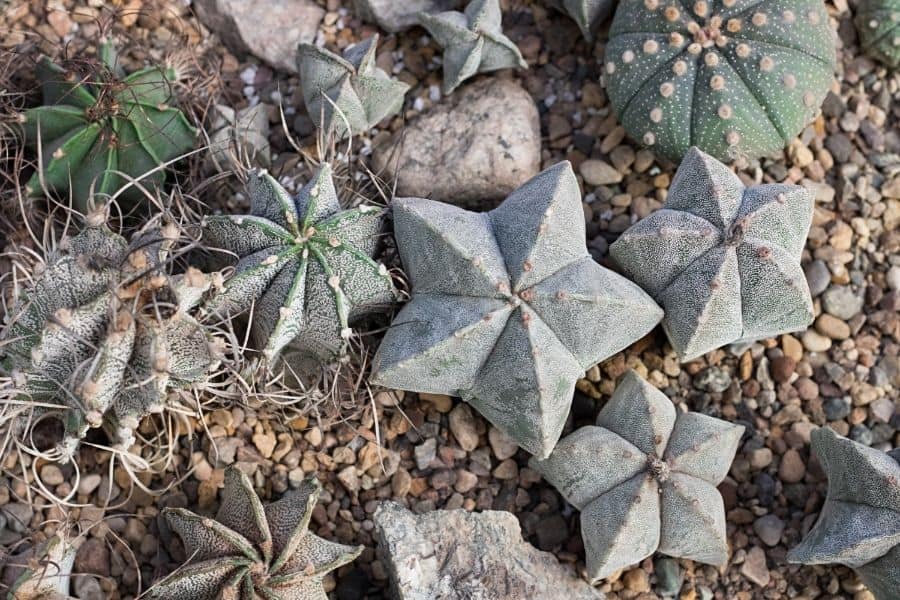
What’s in a name, you ask? Well, when it comes to Astrophytum, it’s all about stars! The common name of these intriguing cacti is none other than the “star cactus.” Cool, right? This name comes from the Greek word for “star plant,” and it perfectly captures the stunning shape of these cacti when you view them from above – they really do resemble twinkling stars!
But wait, there’s more! Astrophytum also goes by another common name: “living rocks.” Why, you ask? It’s because of their unique shape. These cacti have ribs or areoles that are adorned with tiny white spikes, giving them the appearance of rugged rocks brought to life. It’s like having your very own mini desert landscape right at home!
Astrophytum Varieties Identification Chart
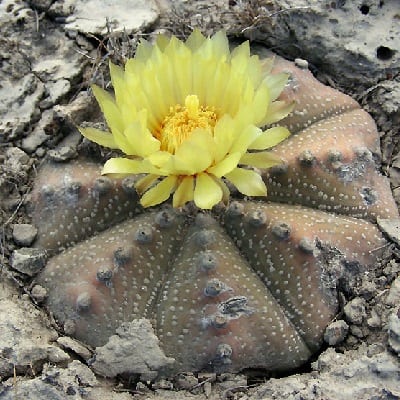
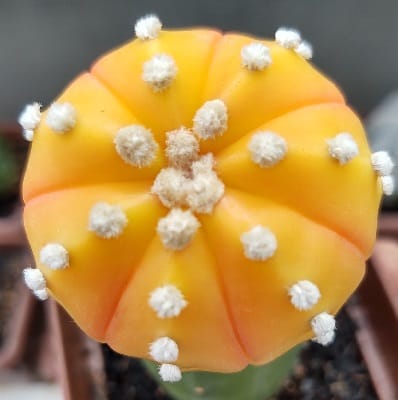
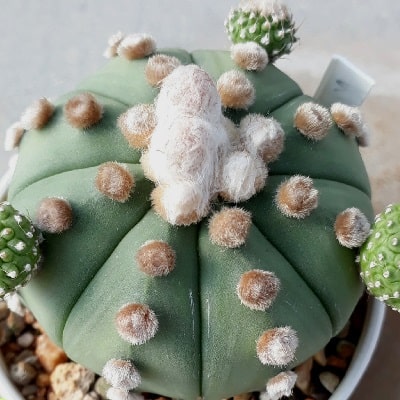
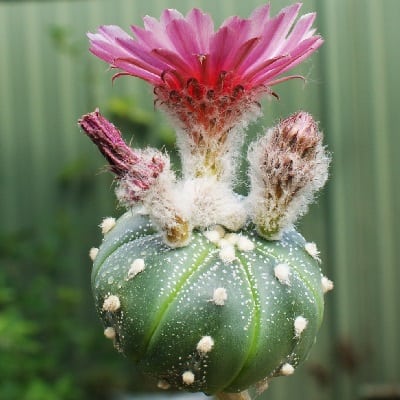
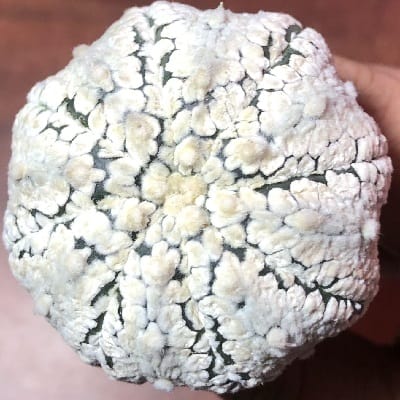
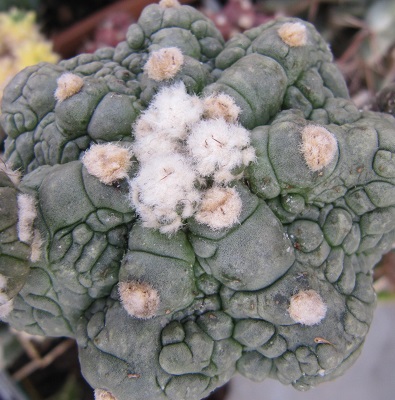
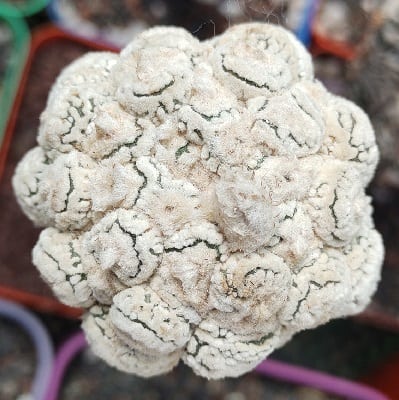
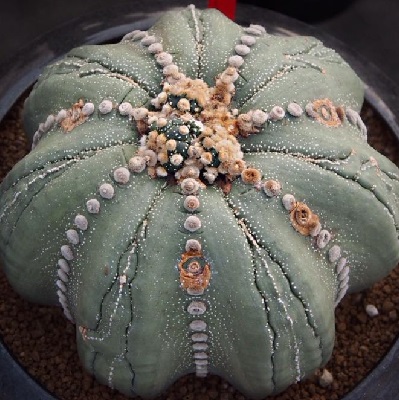
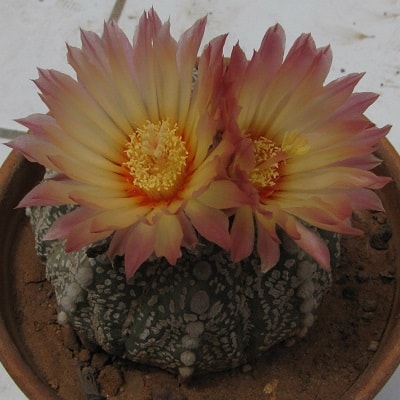
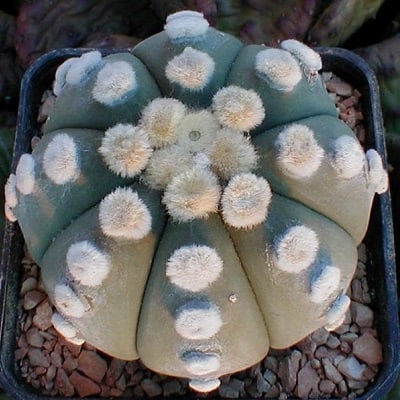
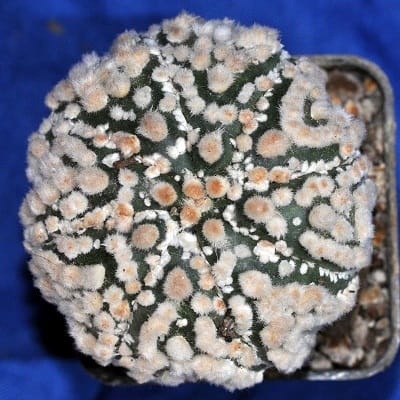
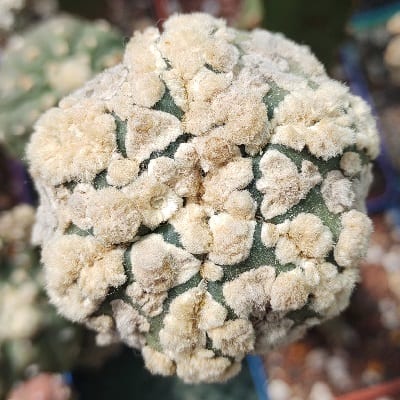
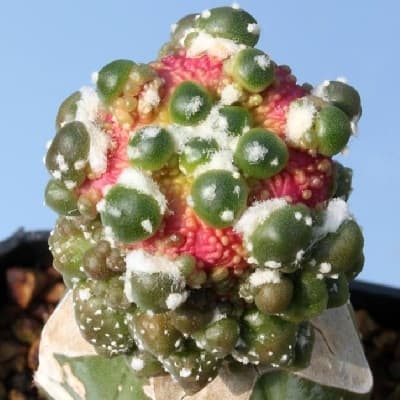
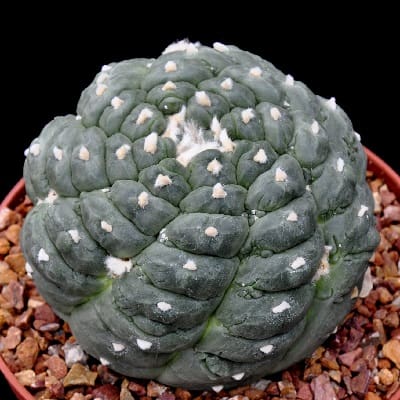
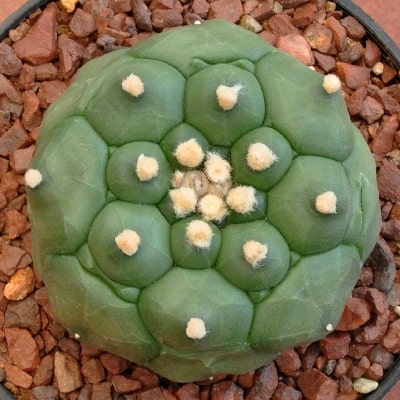
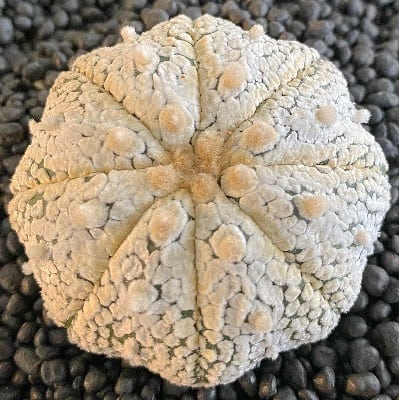
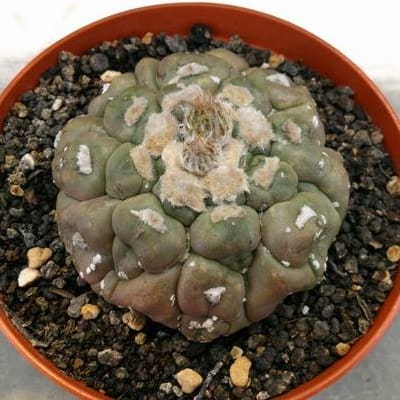
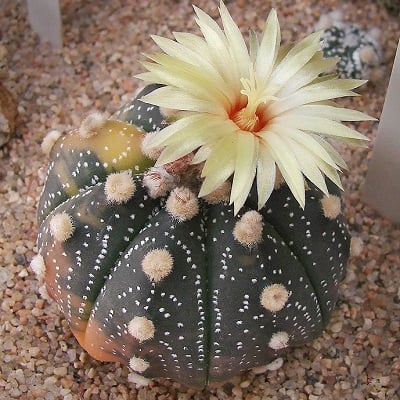
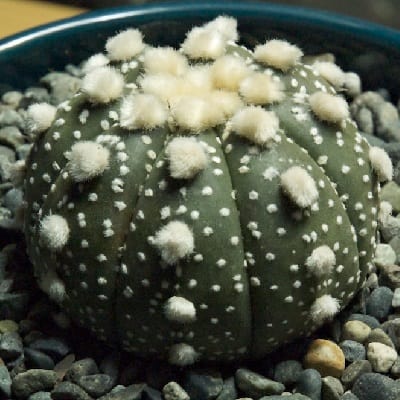
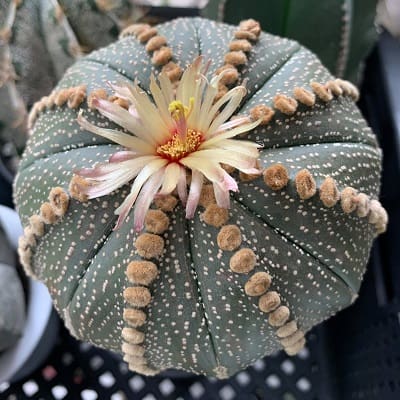
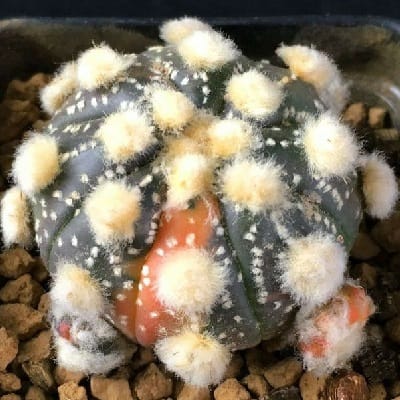
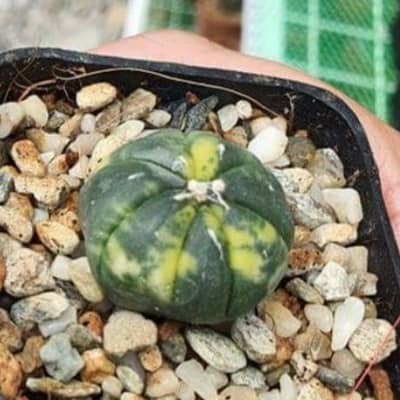
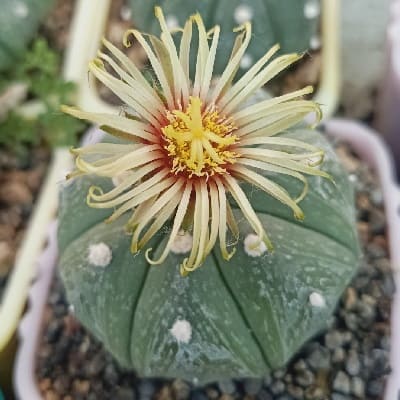
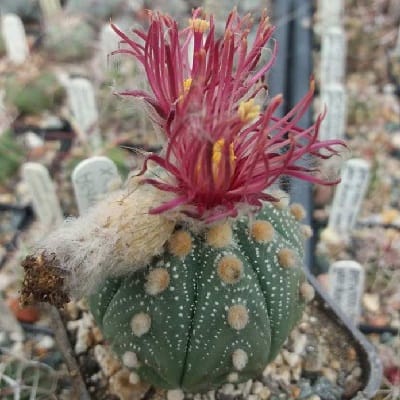
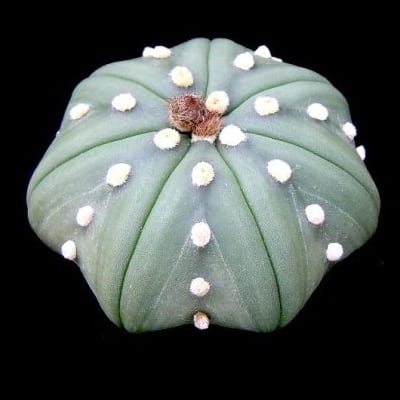
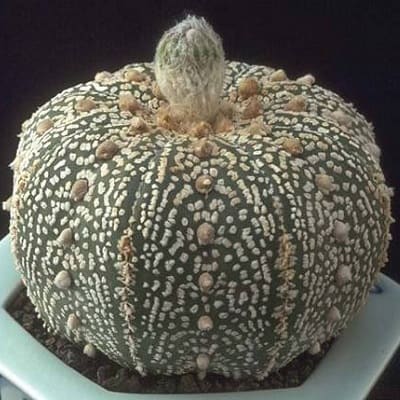
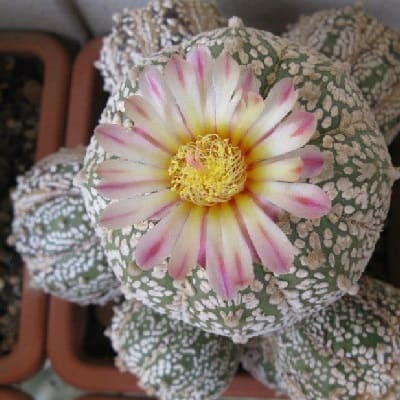
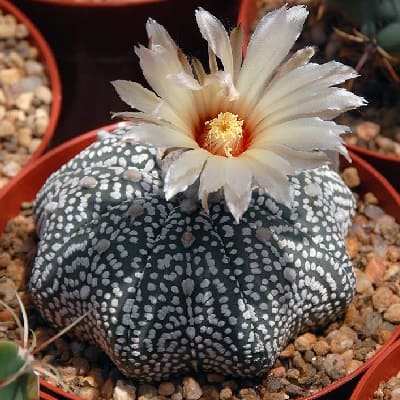
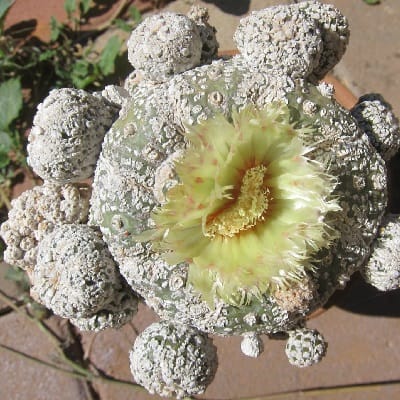
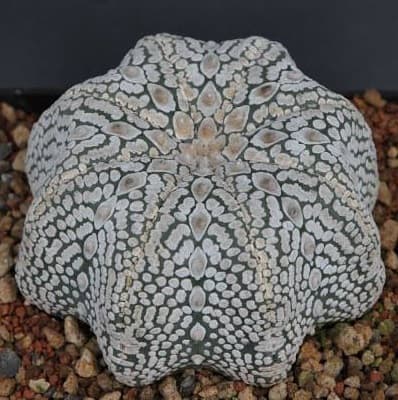
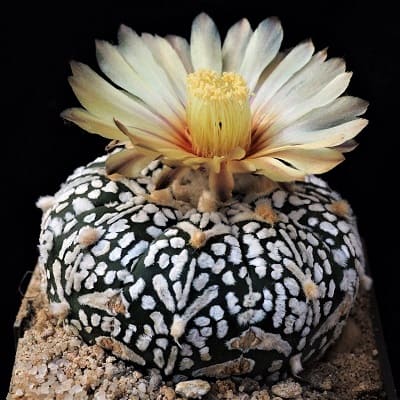
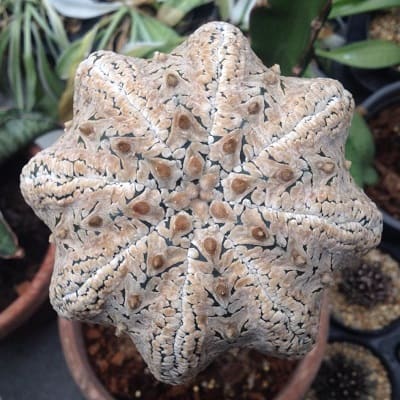
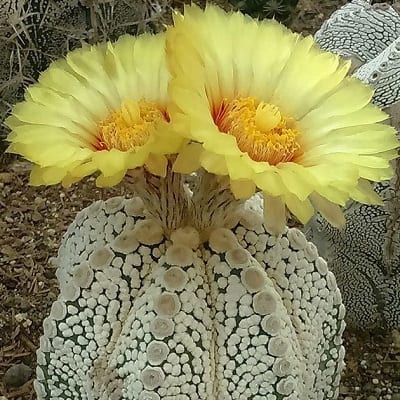
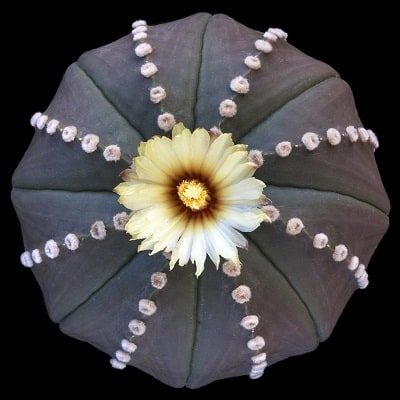
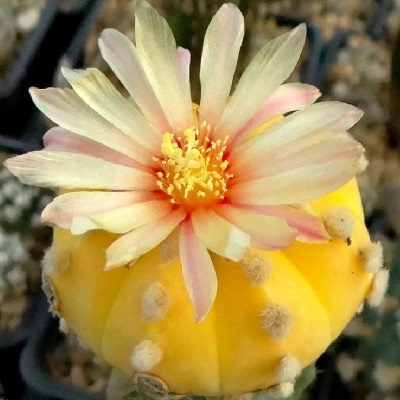
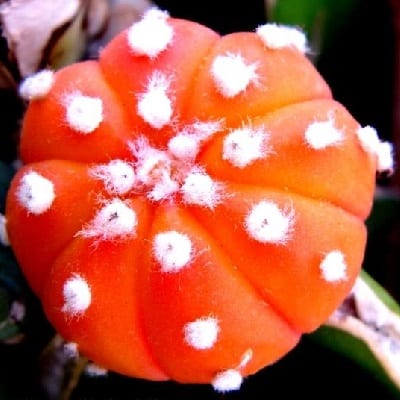
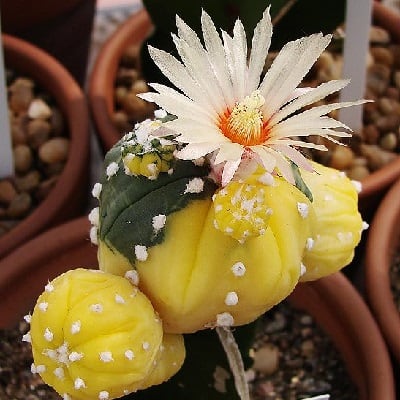
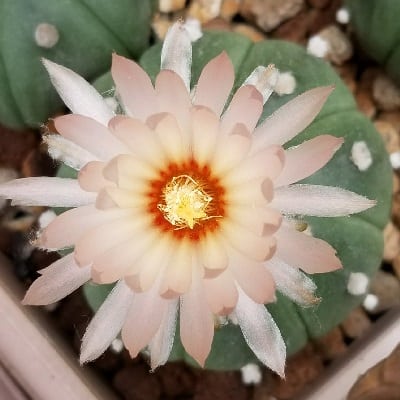
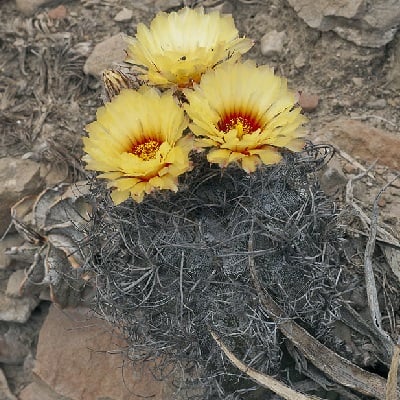
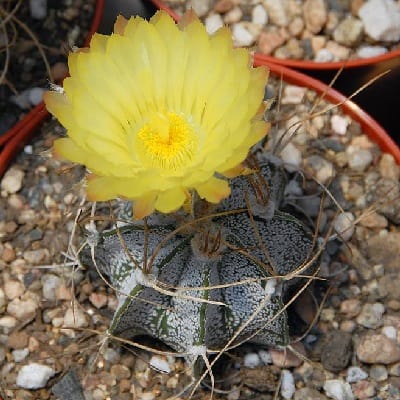
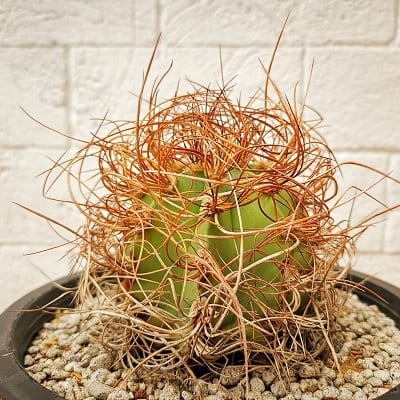
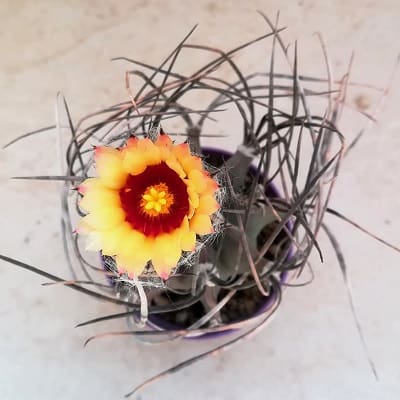
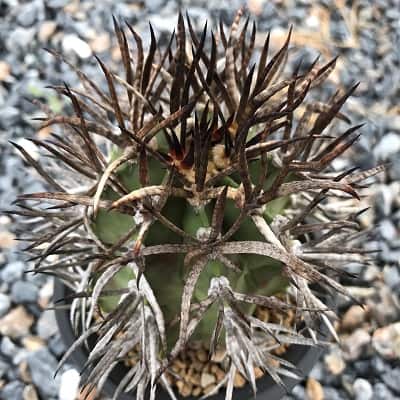
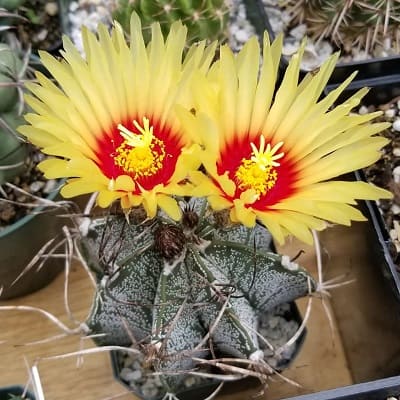
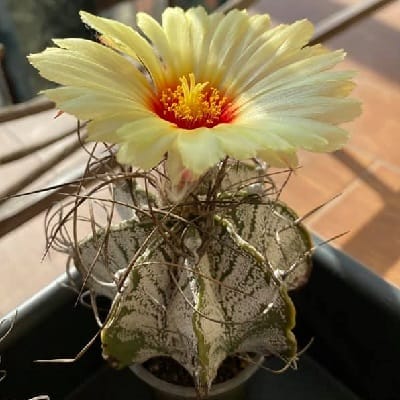
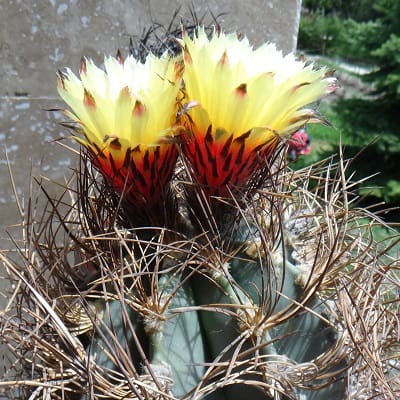
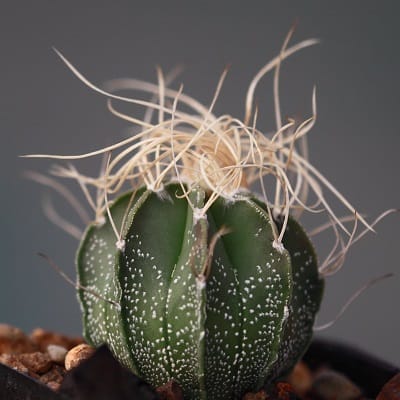
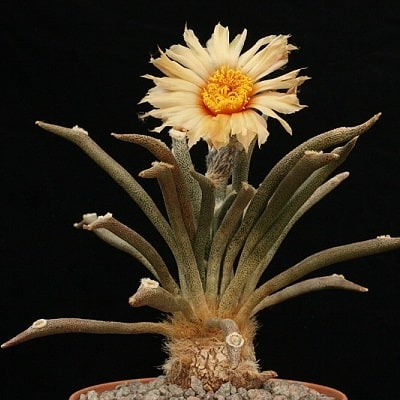
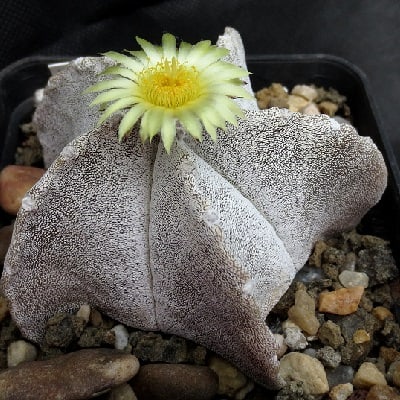
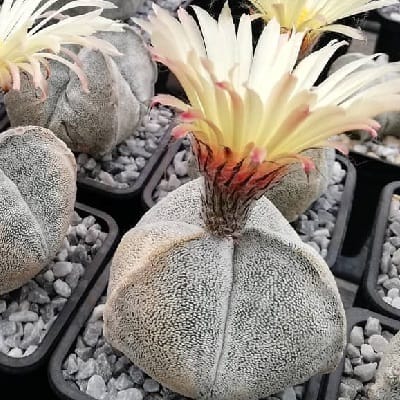
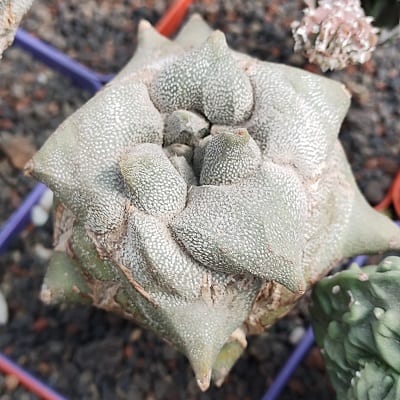
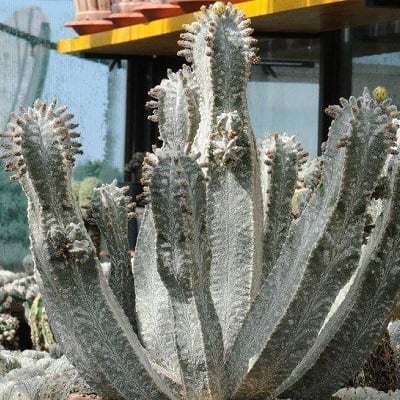
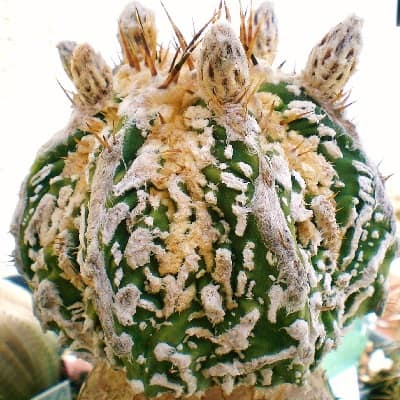
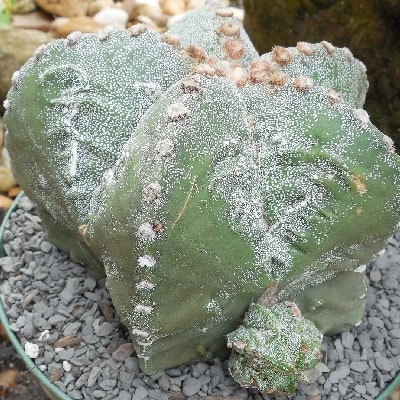
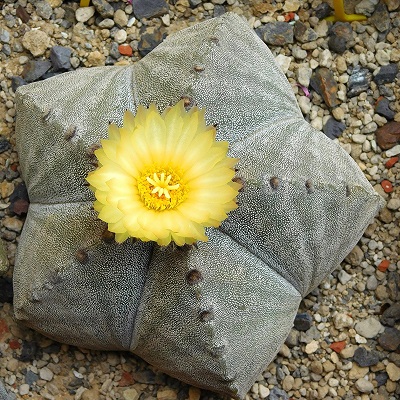
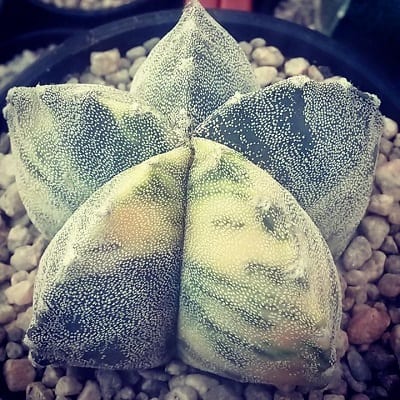
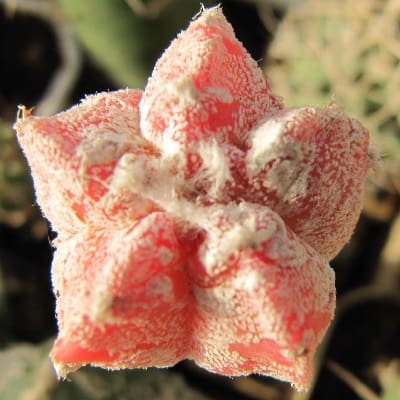
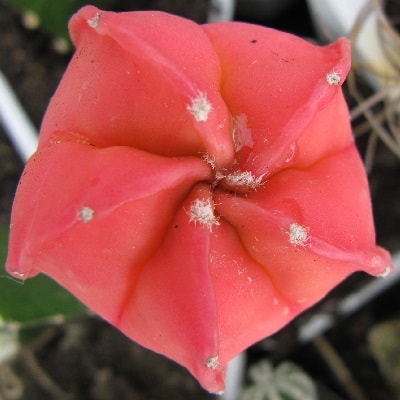
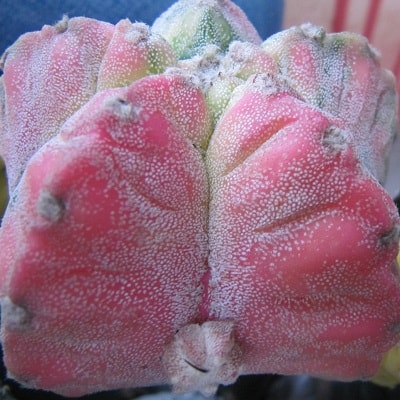
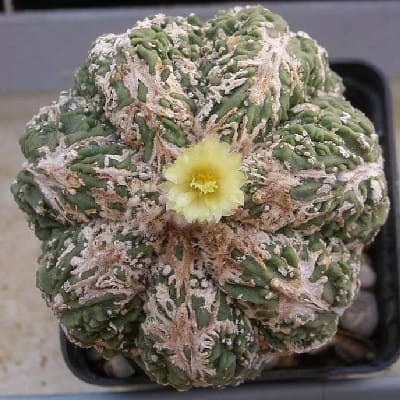
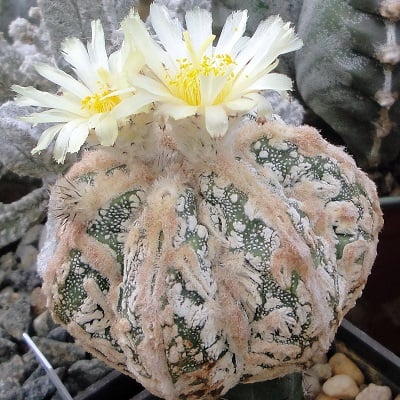
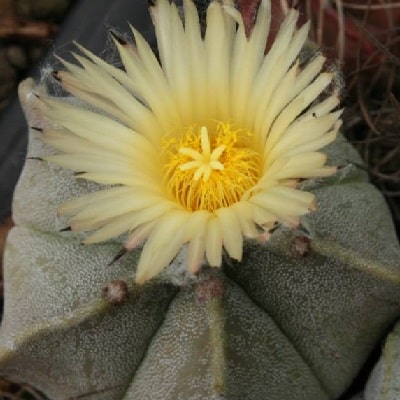
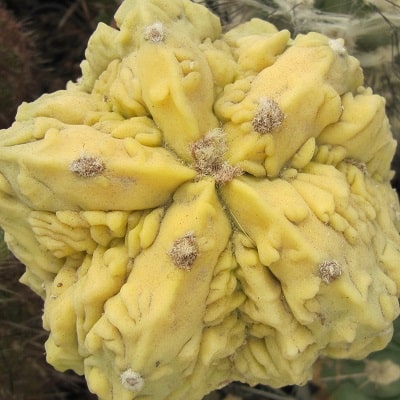
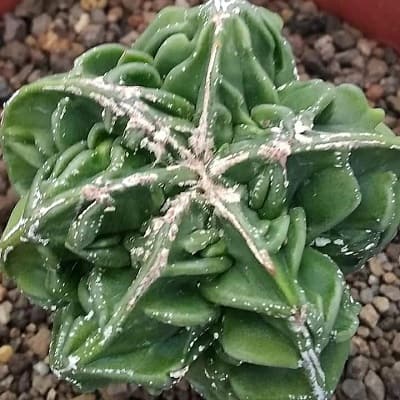
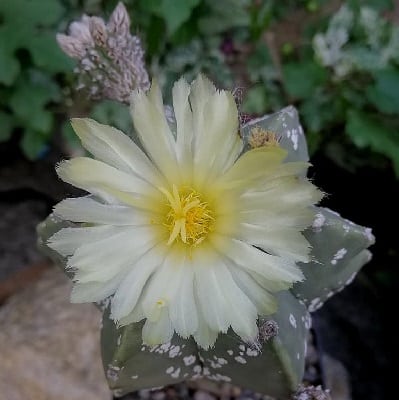
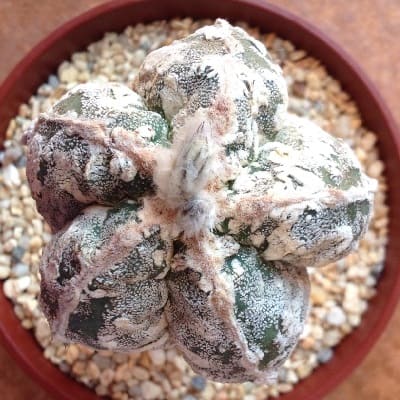
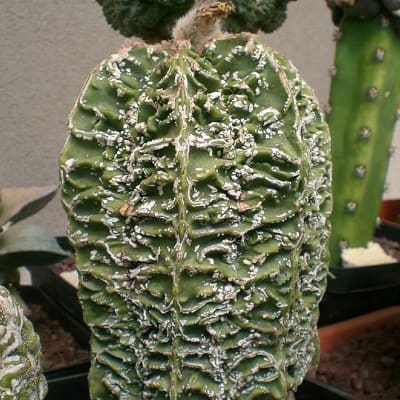
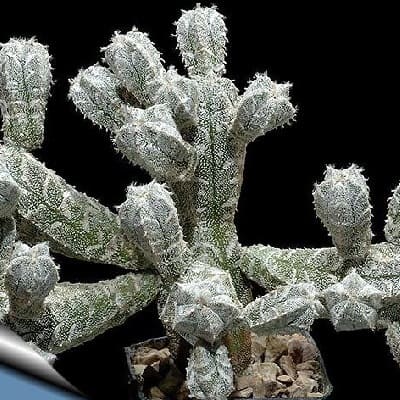
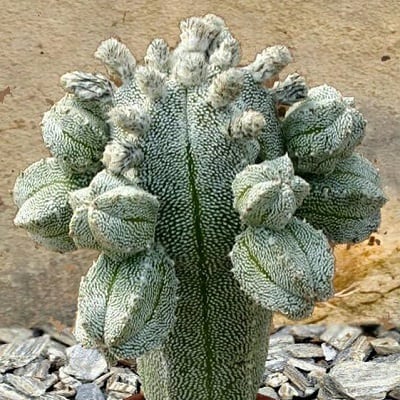
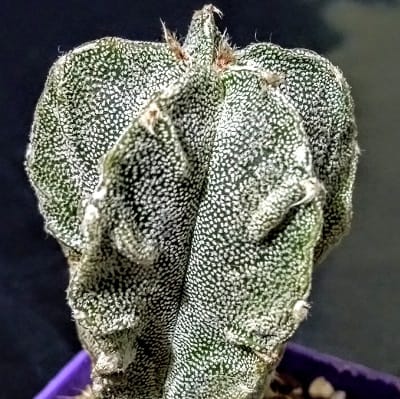
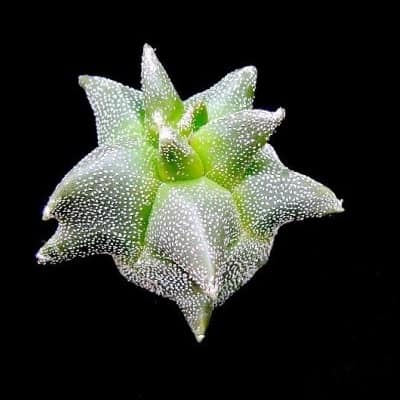
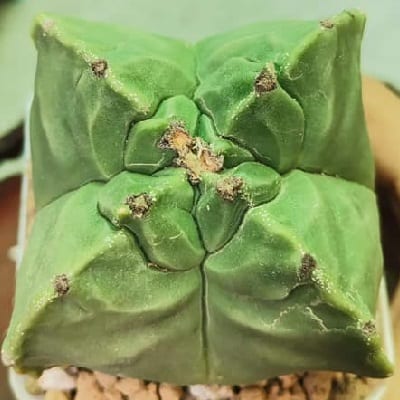
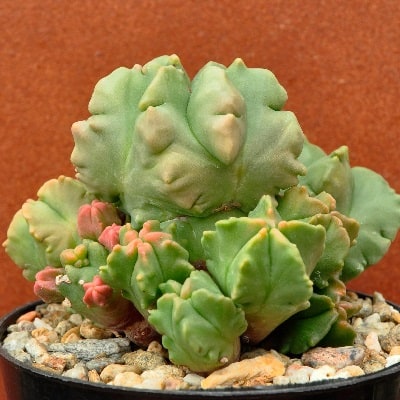
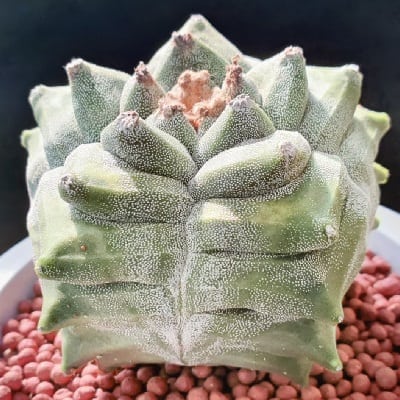
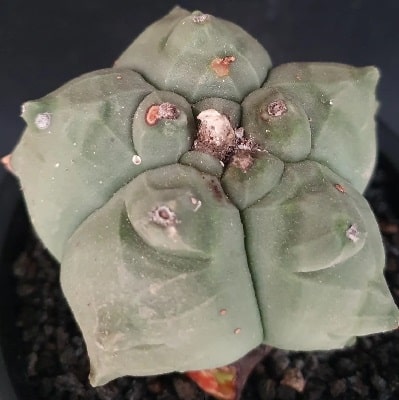
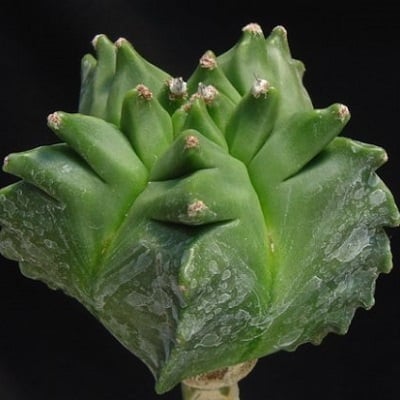
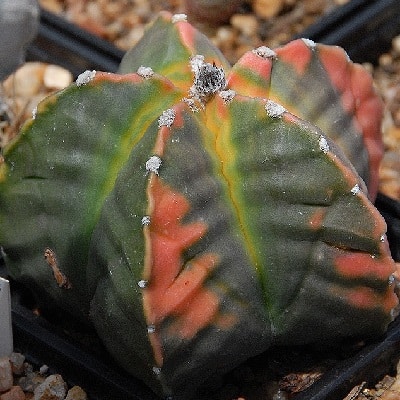
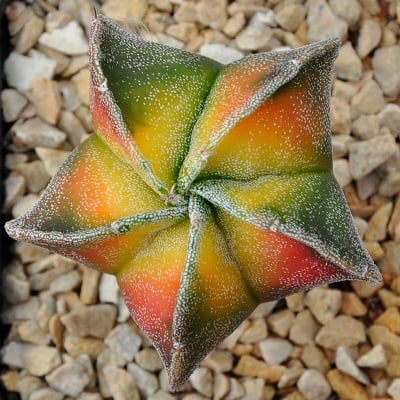
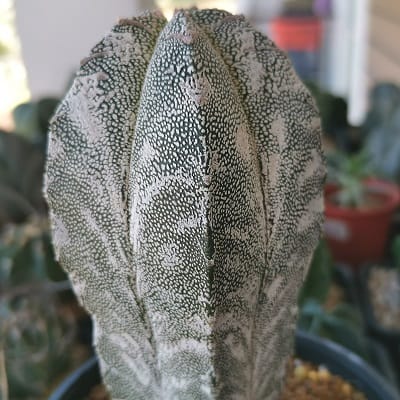
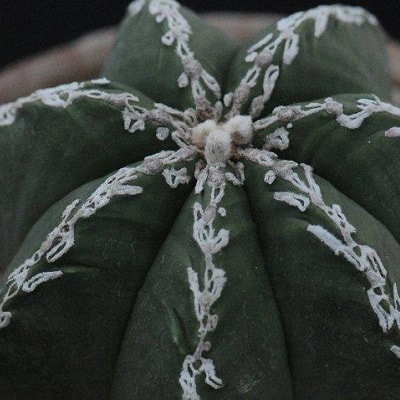
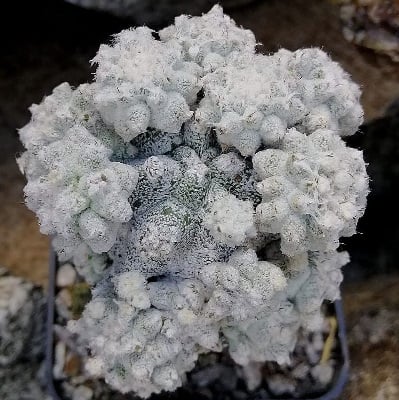
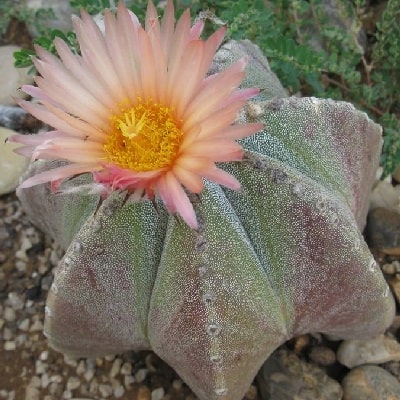
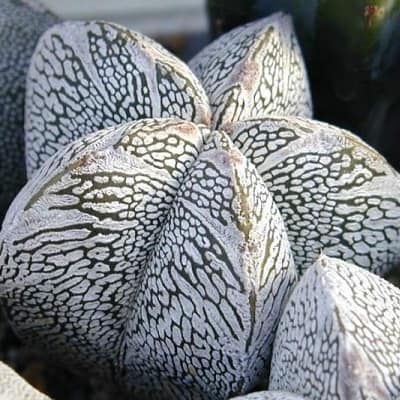
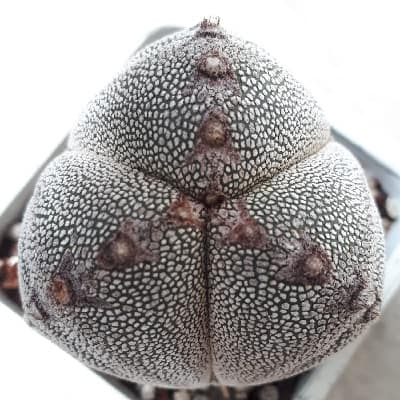
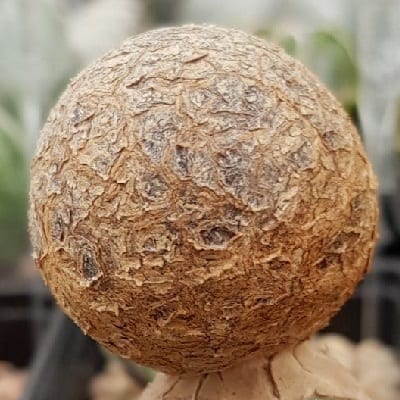
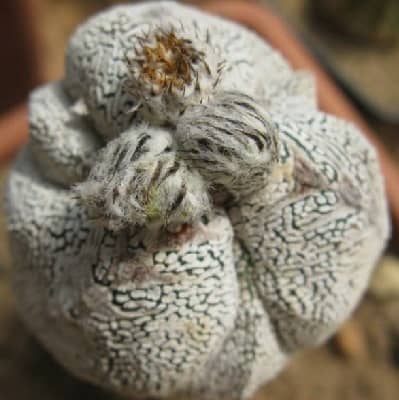
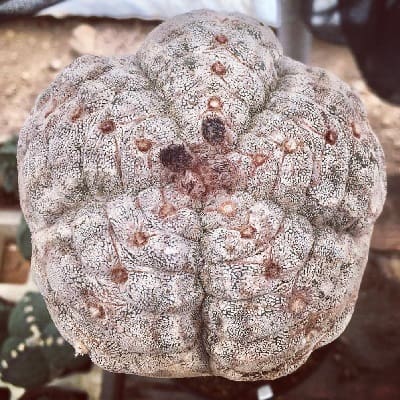
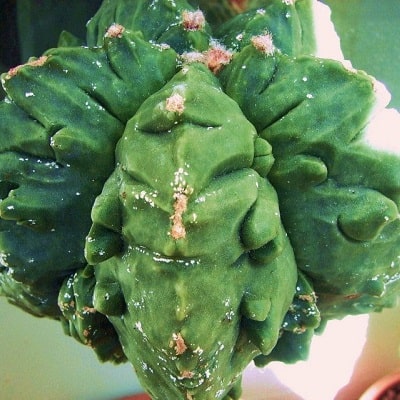
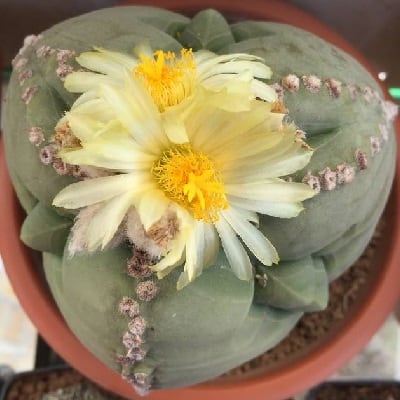
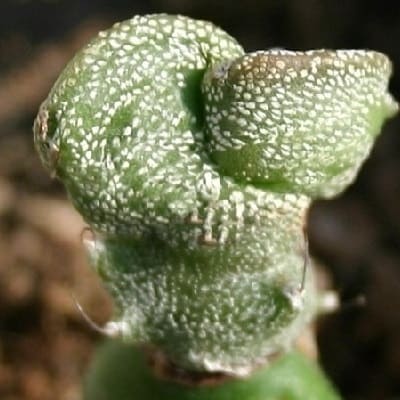
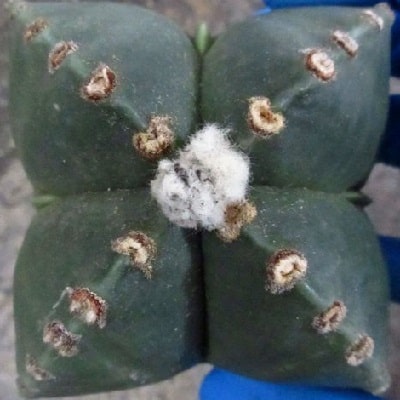
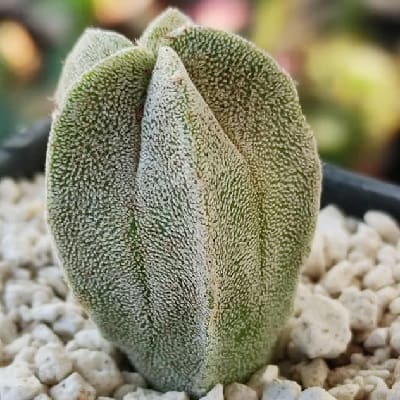
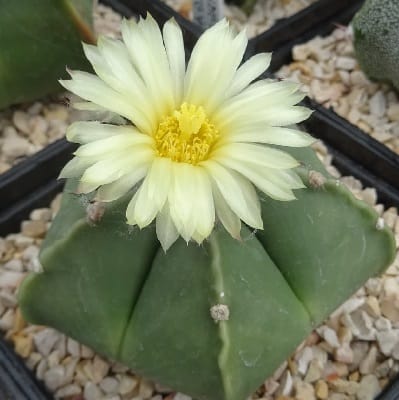
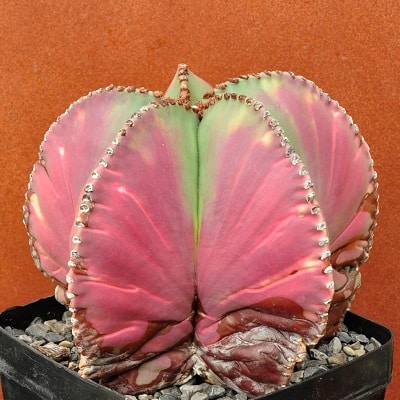
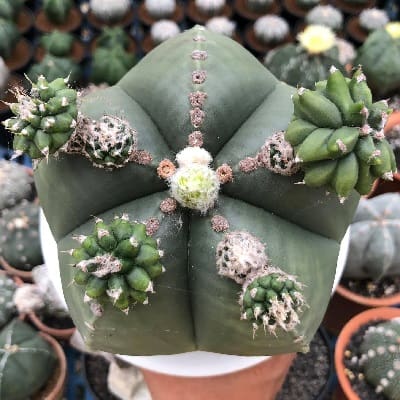
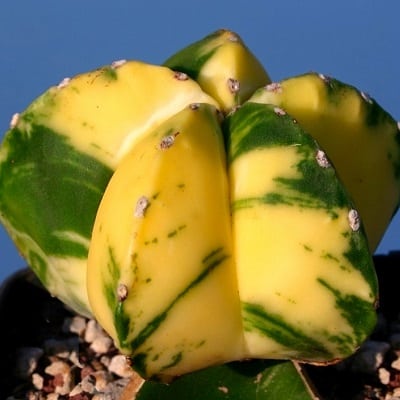
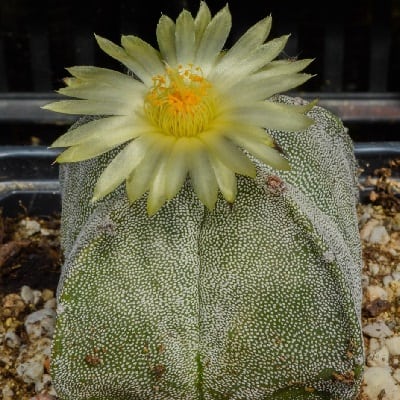
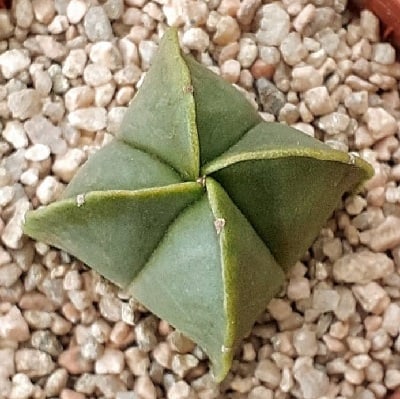
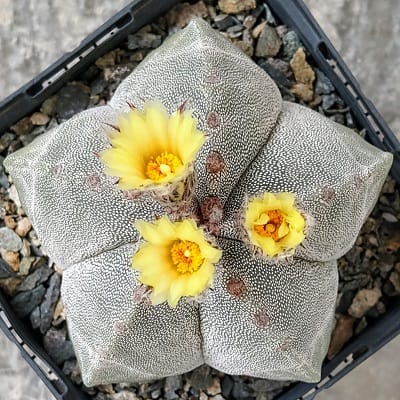
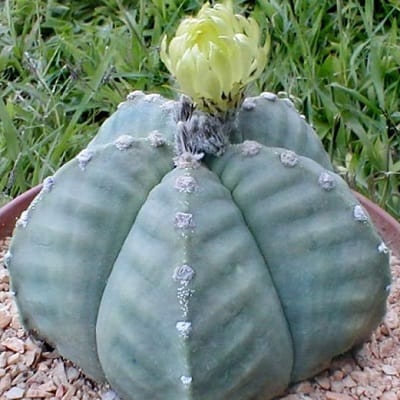
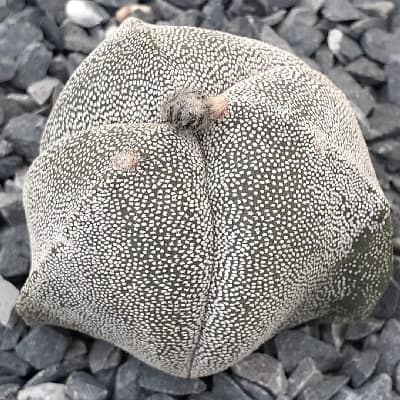
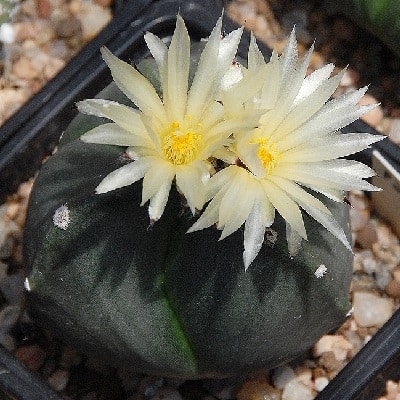
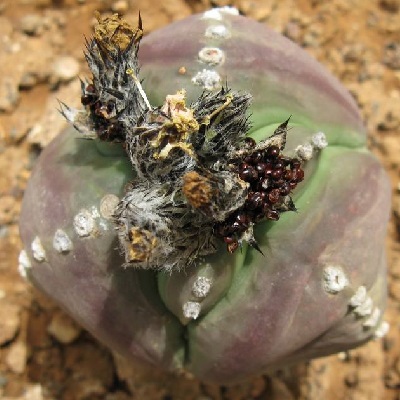
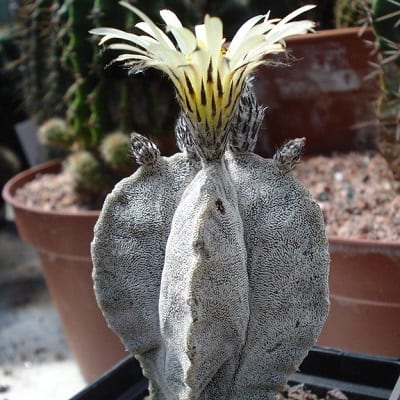
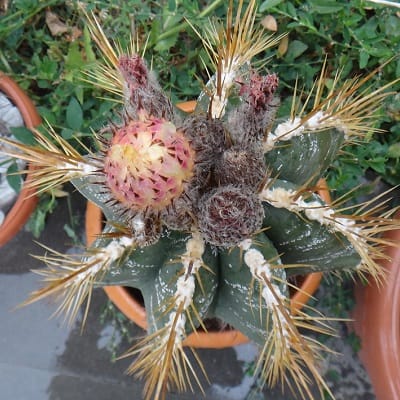
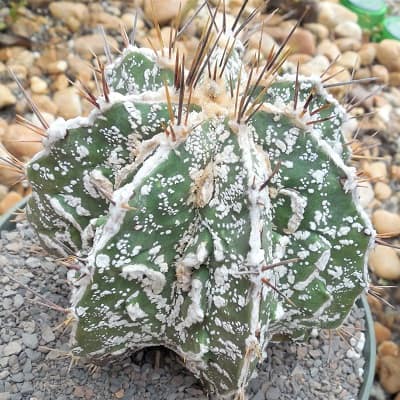
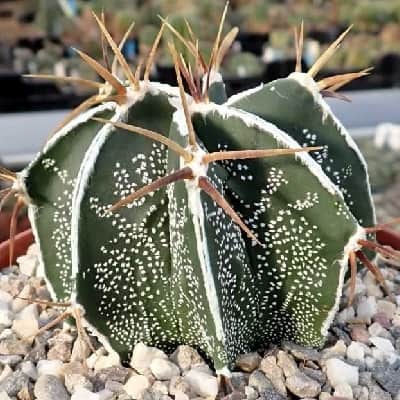
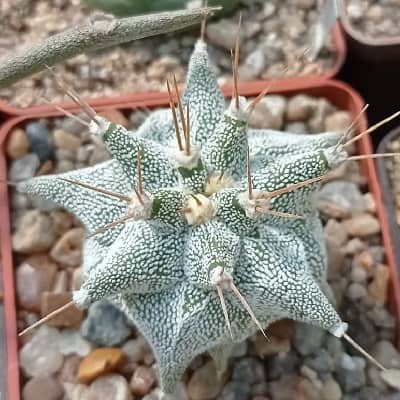
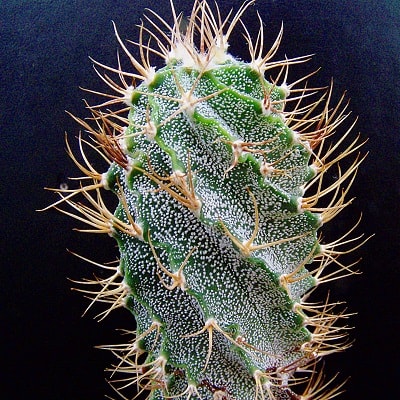
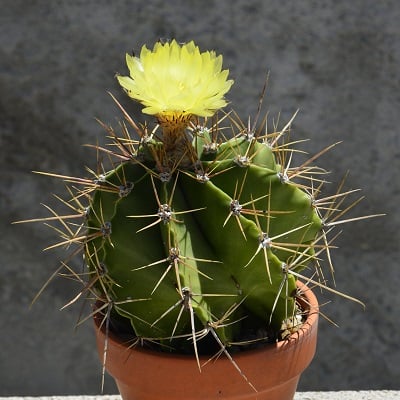
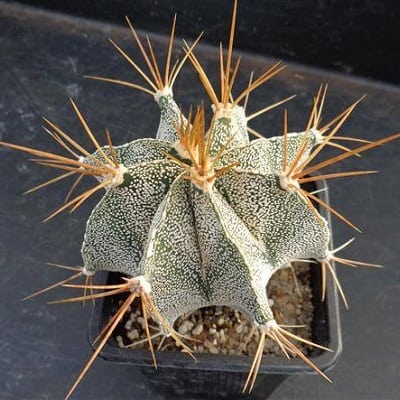
Related Post:
1,000 Types of Cactuses with Pictures
Astrophytum Species and Varieties
Astrophytum asterias

This unique cactus, also known as the Sea-Urchin Cactus or Sand Dollar, has a striking flat shape and lacks the typical spines we associate with cacti. Instead, it sports a tiny tuft of pinhead-sized speckled hairs. The plant produces large yellow flowers with orange throats, often larger than the plant itself. Its name comes from its resemblance to a spineless sea urchin.
Astrophytum asterias f. aurea

In this variety, the stems appear pale yellow due to reduced chlorophyll pigments. The green coloration is replaced by other pigments, creating an overall yellow appearance. This form is highly prized and usually grafted onto other cactus species, as it cannot be grown on its own roots.
Astrophytum asterias var. nudum


Unlike the common Astrophytum asterias, this variety showcases a smooth green stem without the typical white tufts of loose hairy scales. The plants may take on a nice red coloring during their cold and dry winter rest.
Astrophytum asterias var. nudum f. rubra

In this striking cultivar, the stems turn bright orange-red due to reduced chlorophyll pigments. The green coloration is replaced, resulting in a vivid red appearance. Like other schizochromic forms, it is usually grafted onto stronger cactus species.
Astrophytum asterias f. proliferum

This cultivar sets itself apart from the typical Astrophytum asterias by branching and forming small side pups from the areoles.
Astrophytum asterias var. roseiflorum

Belonging to the multiform species of Astrophytum asterias, this selected form boasts beautiful pink-colored flowers instead of the usual yellow. While they are rare, few specimens with pink flowers may occasionally appear among the typical yellow-flowered plants.
Astrophytum asterias cv. Akabana

This unusual variety stands out with its red blooms, a rare trait within the genus. It bears beautiful flowers shaded in dark pinkish-red, orange-red, purple, or wine-red. Red-flowered specimens are quite rare and sought after by collectors.
Astrophytum asterias cv. Alpus

Featuring a star-like shape and a heavily woolly appearance, this cultivar is a standout among Astrophytum asterias cv. Superkabuto. The rib tips are more deeply seated within the plant’s body, creating a unique starry-looking white and furry plant.
Astrophytum asterias cv. Elephant Skin

As the name suggests, this cultivar combines the iconic shape of Astrophytum asterias with the bumpy texture of elephant-like skin. Its distinct appearance makes it a rarity among collectors.
Astrophytum asterias cv. Fukuryiu

This odd cultivar develops protuberances or small extra ribs on the side, sandwiched between two contiguous true ribs. These additional ribs lack areoles and typically do not reach the plant apex.
Astrophytum asterias cv. Godzilla
This is a very unique and rare cultivar that combines the distinct shape of Astrophytum asterias with bumpy reptile-like skin, resembling the legendary Godzilla. Collectors are particularly drawn to this cultivar because of its striking features. Different forms of Astrophytum asterias cv. Godzilla have been selected by growers in Asia, showcasing their fascination with this extraordinary cactus.
Astrophytum asterias cv. Hakuun

While similar to the typical A. asterias, this cultivar stands out with its distinctive cloud-like patches formed by white flecks.
Astrophytum asterias cv. Hanazono

Known as the Hanazono Kabuto, this unique Japanese cultivar produces additional woolly areoles on the rib’s surface. Flower buds develop between two ribs, rather than from areoles. It is highly sought after by collectors for its exclusive features.
Astrophytum asterias cv. Ikaryoko

This Japanese cultivar sports a lumpy-bumpy monstrous, reptile-like skin. It branches profusely from the side areoles, forming a tangled mound. It is prized for its distinct characteristics.
Astrophytum asterias cv. Kikko

This rare Japanese cultivar showcases raised tubercles along the rib’s edges, giving it a bumpy appearance. When viewed from above, its unique pattern resembles a tortoise shell.
Astrophytum asterias cv. Kikko Lizard Skin
This unusual form features raised tubercles with a lizard-like skin, creating a bumpy look that adds to its intriguing appearance.
Astrophytum asterias cv. Kikko Nudum

Similar to the Kikko form, this cultivar has raised tubercles along the rib’s edges. Its areoles stick out with large notches between them, producing a bumpy texture resembling a tortoise shell.
Astrophytum asterias cv. Mamma Kikko
This cultivar gets its name from the unique shape of its ribs, which resemble women’s breasts. When viewed from above, the plant’s pattern resembles a tortoise shell.
Astrophytum asterias cv. Muscle

Featuring green ribs with large creamy white areoles, this cultivar is known for its abnormal tendency to branch and form small side pups. It exhibits considerable variation and may even produce crested and monstrous forms.
Astrophytum asterias cv. Nisiki (orange)

This variegated cultivar showcases distinct sectors, patches, or stripes with shades of orange or pinkish-red.
Astrophytum asterias cv. Nisiki (yellow)
Similar to its orange counterpart, this variegated cultivar exhibits sectors, patches, or stripes with shades of yellow.
Astrophytum asterias cv. Ooibo Kabuto

This Japanese selected strain features very large and woolly areoles, making it easily distinguishable from the common Asterias variety.
Astrophytum asterias cv. Rensei

In this cultivar, the areoles on the ribs are very close and form an unbroken chain-like line.
Astrophytum asterias cv. Ruri Kabuto Nisiki (Yellow)

This selected form of Astrophytum asterias var. nudum stands out with its vibrant yellow sectors, patches, or stripes.
Astrophytum asterias cv. Showa


This classic cultivar produces flowers that deviate from the usual appearance of Astrophytum. The petals are finely cut, and the colors range from yellow to pink-red or orange-red.
Astrophytum asterias cv. Star Type

This unique cultivar of Astrophytum asterias showcases a stem with a star-shaped silhouette, setting it apart from the rounded shape of the typical species.
Astrophytum asterias cv. Super Hanazono
Considered one of the most prized and peculiar Japanese Astrophytum cultivars, this variety combines the additional woolly areoles of Astrophytum asterias cv. Hanazono with the extensive mosaic of white spots seen in Astrophytum asterias cv. Superkabuto. The result is an intensely white and furry plant with a truly unique appearance. Some additional woolly areoles develop on the ribs’ surface, and flower buds typically form between two ribs rather than from areoles. Collectors highly value this cultivar for its exclusive features.
Astrophytum asterias cv. Superkabuto








Known for its inimitable fuzzy epidermis, Astrophytum asterias Super Kabuto stands out among cactus enthusiasts. It is easily distinguished by its extensive mosaic of white spots, creating an intensely maculated appearance.
Astrophytum asterias cv. Thirteen ribs
While most Astrophytum asterias have eight ribs, this exceptional variety can have up to thirteen ribs, although it may suggest hybridization with other species.
Astrophytum capricorne

This solitary cactus features long, curled spines resembling goat’s horns.
Astrophytum capricorne var. aureum

In this variety, the spines are golden yellow when young, gradually turning greyish as they age.
Astrophytum capricorne var. crassispinum

This variety is characterized by a sharp-ribbed body, with larger bright green stems that lack the typical white dots.
Astrophytum capricorne var. crassispinum cv. Hooks
This unique form of Astrophytum capricorne var. crassispinum features spines that end with a hook-like shape. These distinctive spines make it stand out among other varieties of the species.
Astrophytum capricorne var. crassispinum cv. Taiho-gyoku

Also known as “Taiho” in Japanese, this cultivar displays specially curved and thicker spines compared to other capricorne varieties. It exhibits a unique appearance with larger, bright green stems and a dense cover of felty areoles. Its distinguishing traits include a lack of typical white flakes found in Astrophytum’s epidermis.
Astrophytum capricorne var. niveum

This variety of Astrophytum capricorne is larger in size compared to var. senilis and var. aureum. Its dimensions resemble those of the standard species, and it showcases the characteristic curled spines. Over time, the spines transform from a golden yellow color in their early stages to a grayish hue.
Astrophytum capricorne subs. senile

Also known as the grass bundle cactus, this variety stands out with its densely wrapped, grass-like appearance. The stem is hardly visible due to an abundance of soft spines.
Astrophytum capricorne subs. senile cv. Krausii

This specific cultivar showcases pure white spines and yellow flowers without the typical red throat. It is a stable mutation that comes true from seeds.
Astrophytum capricorne subs. senile cv. Rosa
While maintaining the densely wrapped appearance of the subspecies, this form produces peach-colored flowers. It maintains the resemblance to a dry grass bundle.
Astrophytum caput-medusae

Astrophytum caput-medusae, also known as the “Medusa’s head” cactus, has thin, leaf-like tubercles that resemble the hair of Medusa. These tubercles can reach up to 190 mm in length and 2 to 5 mm in width. The surface of the stem is covered with stigmas, giving it a unique appearance.
Astrophytum caput-medusae f. nudum
Astrophytum caput-medusae f. nudum is a variation of the Astrophytum caput-medusae that lacks the typical stigmas. Instead, it has glossy green cylindrical tubercles. While there are no other clear distinguishing features, all variations of this cactus belong to the same species.
Astrophytum coahuilense

Astrophytum coahuilense, with its five ribs, bears a striking resemblance to the Astrophytum myriostigma. However, it differs from it in terms of flower, fruit, seed, and even the appearance of the embryo, which closely resembles that of the Astrophytum capricorne. The flowers of Astrophytum coahuilense are yellow with a red throat and sometimes appear purely red or very rarely purely yellow. The fruit is red, turning olive-green, and contains up to 200 seeds. This plant is more closely related to the Asterias/capricorne group than to the myriostigma.
Astrophytum coahuilense f. tricostatum

Astrophytum coahuilense f. tricostatum is a pleasant cultivar with only three ribs covered in dense white flecks. These flecks give the stem a unique appearance.
Astrophytum coahuilense cv. Hakuran

Also known as Astrophytum coahuilense f. monstruosa or “kikko,” cv. Hakuran is easily recognizable by its wide and long pointed tubercles along the rib edges. The larger and more prominent these “teeth” are, the better the plant is considered to be.
Astrophytum coahuilense cv. Little Flowers

Like the standard Astrophytum coahuilense, this cultivar has five ribs covered in dense gray flecks. However, the stems of cv. Little Flowers are thinner and more columnar, with a tendency to form small clumps. The flowers are very small, pale yellow, and lack the characteristic red throat seen in typical coahuilense. Some speculate that this cultivar might be a variation of Astrophytum myriostigma due to its unusual characteristics.
Astrophytum myriostigma


Astrophytum myriostigma (often called the Bishop’s cap) is a spineless succulent plant. Its stem has a star-shaped cross section resembling a bishop’s mitre. The plant is usually solitary or has a few basal branches.
Astrophytum myriostigma var. bicostatum

Astrophytum myriostigma var. bicostatum has only two ribs, although this characteristic is unstable and may not persist over many years.
Astrophytum myriostigma var. columnare

This variety of Astrophytum myriostigma exhibits a more columnar growth habit and smaller flowers compared to the typical species.
Astrophytum myriostigma var. nudum


Astrophytum myriostigma var. nudum lacks the white flecks seen in the typical form, resulting in a bright green, blue-green, or mauve-green overall coloration, depending on the clones.
Astrophytum myriostigma var. nudum f. colorata
This form of Astrophytum myriostigma var. nudum exhibits yellow, orange, or red stems due to the absence or reduced production of chlorophyll pigments.
Astrophytum myriostigma var. nudum cv. Maiden’s Blush

Astrophytum myriostigma var. nudum cv. Maiden’s Blush is a cultivar of the nudum variety. It deviates from the typical form by displaying a mauve-green color and a shiny epidermis.
Astrophytum myriostigma var. quadricostatum

Astrophytum myriostigma var. quadricostatum manifests with only four ribs instead of the usual five. This variation is not very stable and may not maintain the distinct characteristic for a long time.
Astrophytum myriostigma var. quadricostatum f. nudum

Astrophytum myriostigma var. quadricostatum f. nudum is a form of quadricostatum that lacks white flecks. Depending on the clones, these plants can have a bright green, blue-green, or mauve-green overall color.
Astrophytum myriostigma f. rubra

Astrophytum myriostigma f. rubra refers to plants with bright orange-red notched ribs. This coloring is due to the absence or reduced production of chlorophyll pigments.
Astrophytum myriostigma var. strongylogonum


Astrophytum myriostigma var. strongylogonum is a distinctive variation with rounded, non-angular ribs. In mature specimens, the ribs become noticeably curved, creating a contrast with other myriostigmas. Juvenile plants resemble other myriostigmas with sharp ribs.
Astrophytum myriostigma var. tricostatum



Astrophytum myriostigma var. tricostatum features only three ribs, often covered with light or dense white flecks. This cultivar tends to be unstable, and some specimens may develop additional ribs as they age.
Astrophytum myriostigma var. tulense

Astrophytum myriostigma var. tulense is a naturally occurring variation of Astrophytum myriostigma. It is characterized by its columnar stems, reaching heights of up to 90 cm. This variety typically has five twisted ribs and is covered with dense white flecks. However, the number of ribs can vary, and as the plant matures, it may develop additional ribs, potentially increasing to as many as 10 or more. The flowers of Astrophytum myriostigma var. tulense are smaller and yellow in color. This variety is self-sterile and can only produce viable seeds through cross-pollination.
Astrophytum myriostigma cv. Abekobe
Astrophytum myriostigma cv. Abekobe has a chalky-white body almost entirely covered in white flecks. It creates a visually striking appearance.
Astrophytum myriostigma cv. Double Ribs Nudum
Astrophytum myriostigma cv. Double Ribs Nudum is a rare cultivar characterized by each rib having two parallel lines of areoles, unlike the typical myriostigma.
Astrophytum myriostigma cv. Dragon
Astrophytum myriostigma cv. Dragon is an odd cultivar that features bulging, crest-like outgrowths between contiguous ribs. With age, these crest-like formations become more raised and may protrude above the rim of the true ribs.
Astrophytum myriostigma cv. Fire Works

Astrophytum myriostigma cv. Fire Works is a fascinating cultivar with a crumpled and wrinkled appearance, resembling fireworks. The stems have unique designs radiating from each areole, resembling a firework display. It is a visually striking variation prized by collectors.
Astrophytum myriostigma cv. Fjordhest

Astrophytum myriostigma cv. Fjordhest is a unique cultivar with a grey-green or mauve-green coloration. It has an almost nude appearance, lacking or mostly lacking white flecks. This variation is known for stems that are thin, columnar, and have a tendency to branch from the side areoles, forming small clumps. The flowers of this cultivar are very small, up to 2.5 cm long, and pale yellow, often lacking the characteristic red throat. There is speculation that this cultivar may be a variation of Astrophytum myriostigma or a cultivar of Astrophytum myriostigma.
Astrophytum myriostigma cv. Fukuryu reticulatus
Astrophytum myriostigma cv. Fukuryu reticulatus exhibits small, thin extra ribs, each with a white felty line, giving the appearance that the ribs are connected. This cultivar stands out with its distinct pattern and is often sought after by collectors.
Astrophytum myriostigma cv. Hakuun


Astrophytum myriostigma cv. Hakuun is a cultivar with characteristic cloud-like patches formed by white flecks. The stem has a wrinkled or crumpled appearance, resembling the texture of an Aztekium ritteri. There is also a nude form of this cultivar called “Hakuun nudum,” which exhibits the cloud-like design on a pure green epidermis.
Astrophytum myriostigma cv. Hanakago

Astrophytum myriostigma cv. Hanakago has a wrinkled appearance, resembling a crumpled texture, similar to that of the Aztekium ritteri. It is reminiscent of an extreme form of Astrophytum myriostigma cv. Fukuryu nudum.
Astrophytum myriostigma cv. Huboki

Astrophytum myriostigma cv. Huboki is a unique cultivar with stems and lateral branches that are finger-like, measuring 1.5-2.5 cm in diameter and up to 12 cm tall. The stem is covered with white dots that condense at evenly-spaced intervals, forming a cloud-like decorative design.
Astrophytum myriostigma cv. Hubuki

Astrophytum myriostigma cv. Hubuki is another variation of this cactus. The white dots on the stem are usually spaced in a uniform manner. In contrast to Astrophytum myriostigma cv. Huboki, the white dots on cv. Hubuki form white bands.
Astrophytum myriostigma cv. Kikko







Astrophytum myriostigma cv. Kikko is a rare and highly sought-after cultivar. This variation is characterized by raised tubercles along the rib edges, giving it a bumpy appearance. When viewed from above, the distinct pattern on the stem resembles a tortoise shell. The unique pattern and texture make this cultivar particularly appealing to collectors.
Astrophytum myriostigma cv. Koh-yo

Astrophytum myriostigma cv. Koh-yo is a unique cultivar with colors resembling autumn leaves. The stem exhibits a range of shades, including bright yellow and red, transitioning to dark green over time.
Astrophytum myriostigma cv. Laimake

Astrophytum myriostigma cv. Laimake is a cultivar with a crumpled appearance, resembling wrinkled or crumpled paper. The stem is smaller and more columnar with dense white flecks that condense and form linear bands on the surface.
Astrophytum myriostigma cv. Lotusland

Astrophytum myriostigma cv. Lotusland is a peculiar and visually captivating cultivar. The stem is covered in dense white flecks, and the overall appearance resembles pine cones. As the plant matures, it forms small stems with numerous offsets, creating a unique and attractive display.
Astrophytum myriostigma cv. multicostatum

Astrophytum myriostigma cv. multicostatum is a cultivar characterized by having more than five ribs. The number of ribs can vary, with specimens often having six or eight ribs, but occasionally up to ten or more.
Astrophytum myriostigma cv. Onzuka





Astrophytum myriostigma cv. Onzuka is a cultivar with various distinct forms, each displaying unique traits. This includes the presence of stunning wave-like designs or embroidery patterns on the ribs, creating a visually striking appearance.
Astrophytum myriostigma cv. Ooibo nudum
Astrophytum myriostigma cv. Ooibo nudum combines the unique characteristics of large, woolly areoles from “Ooibo” with the naked green stems of the var. nudum (nude form).
Astrophytum myriostigma cv. Sazanami
Astrophytum myriostigma cv. Sazanami is a cultivar distinguished by wave-like designs or embroidery patterns on the ribs, creating a visually appealing ripple effect. The areoles appear to be connected by small, embroidered ripples.
Astrophytum myriostigma cv. Spiral Ribs
Astrophytum myriostigma cv. Spiral Ribs is a rare form with slightly spiraling ribs, adding a fascinating twist to its appearance.
Astrophytum myriostigma cv. Suminagashi
Astrophytum myriostigma cv. Suminagashi is a rare and highly sought-after cultivar. It is known for its marbled skin, with a gray or bluish-green color and thin streaks running along the sides. The patterning on this cultivar is reminiscent of the Japanese Suminagashi technique of paper marbling. The coloration is not permanent and varies depending on lighting conditions and the individual plant.
Astrophytum myriostigma cv. Yoroi

Astrophytum myriostigma cv. Yoroi is a unique cultivar characterized by a crumpled or ridged appearance, resembling armor. The stems exhibit dense white flecks that cover the bumpy surface. This variation is also known as “Green Dragon” and has a diameter of about 12 cm when fully grown.
Astrophytum ornatum

Astrophytum ornatum is a star-shaped cactus with crossbands of white woolly scales. It is known for its variability in terms of density and distribution of the white scales. It is larger, faster-growing, and easier to cultivate compared to other Astrophytum species. It also tends to have more spines than other varieties.
Astrophytum ornatum var. glabrescens

Astrophytum ornatum var. glabrescens has a stout and nearly naked dark green stem without or with few white hair-tufts, in contrast to the broad bands of white hair tufts seen in typical forms.
Astrophytum ornatum var. mirbelii

Astrophytum ornatum var. mirbelii is a variation of Astrophytum ornatum first described by Lemaire in 1838. It is the more common form of the varieties of Astrophytum ornatum. The stems of this variety are stout and very white, covered with thick white hair-tufts that are evenly spread on the body surface. The spines in this variation are typically golden yellow and slightly shorter compared to other forms. While some botanists do not recognize the variety rank of this taxon, it does not differ significantly from other forms of the species.
Astrophytum ornatum cv. Fukuryu Hania

Astrophytum ornatum cv. Fukuryu Hania is a beautiful Japanese cultivar with irregular ridges and linear white, woolly areoles.
Astrophytum ornatum cv. Hania

Astrophytum ornatum cv. Hania is a rare cultivar characterized by a stem split into tubercles. The areoles stick out on long conical notches, resembling a saw-toothed look.
Astrophytum ornatum cv. Kikko

Astrophytum ornatum cv. Kikko is a rare cultivar distinguished by a stem entirely divided into tubercles. The tubercles are covered in white flecks, giving the stem a unique appearance.
Astrophytum ornatum cv. Spiral

Astrophytum ornatum cv. Spiral is a tiny cactus with spiral-shaped ribs, creating an interesting visual effect.
Caring for Astrophytum
If you’ve decided to grow Astrophytum cacti at home, it’s important to know how to properly care for them. Let’s go through some key care criteria that will help you keep your cacti healthy and thriving.
Light
Astrophytum cacti love sunlight, so it’s essential to provide them with several hours of direct sunlight each day. If you’re growing them indoors, find a sunny spot near a window where they can receive ample sunlight. Outdoors, make sure they’re in an area that gets at least six hours of direct sun.
Temperature
These cacti prefer warm temperatures, ideally above 21℃, but can tolerate some colder temperatures. If the weather gets too cold in winter, consider bringing them indoors and placing them near a window to protect them from the chill. Astrophytum cacti generally thrive in USDA zones 8 and 9.
Watering
During the growing season (spring and summer), water your Astrophytum cactus once a month, although more frequent watering may be required in hotter climates. Ensure thorough watering, allowing the soil to become well-soaked. However, be cautious not to overwater, as excess moisture can lead to root rot. Allow the soil to completely dry out before watering again. In winter, reduce watering as the cactus goes into dormancy.
Soil
Use a well-draining soil mix specific to cacti or combine potting soil with sand for proper drainage. Adding some peat to the soil can also be beneficial. The coarse texture aids in reducing water collection in the pot.
Fertilizing
During the growing season, regularly fertilize your Astrophytum cactus with a balanced fertilizer. Dilute the fertilizer with water to avoid using it at full strength, as it may be too intense for the cactus. Avoid fertilizing during the winter dormancy period.
Pests and Diseases
Although relatively rare, pests like aphids, scales, mealybugs, and scabs can affect these cacti. Overwatering can lead to root rot. If you notice signs of pests or diseases, address them promptly. You can use store-bought solutions or apply rubbing alcohol to affected areas.
How to Propagate Astrophytum
Astrophytum cacti can be propagated from seeds. Here’s a brief overview of the process:
- Obtain seeds from a local nursery or online store. You may also find them on dried flowers of the same plant.
- Soak the seeds in water to allow them to absorb moisture.
- Prepare a flat tray with moist soil mix, covering it with a sheet to retain moisture and warmth.
- As the seeds germinate into seedlings, gradually increase the amount of sunlight they receive.
- Once the seedlings are established, transfer them to a larger pot or container with well-draining soil.
- Follow the care instructions mentioned above to ensure successful growth.
By following these care instructions, you can enjoy the beauty of Astrophytum cacti and successfully propagate new plants. Take pleasure in nurturing these unique and fascinating cacti in your own home.
